Gold Jumps on US Unemployment & Money Printing
News
|
Posted 03/04/2020
|
20409
Gold jumped last night as the US initial jobless claims for the last week saw an unprecedented 6.65m jump. Last week we reported the previously unprecedented 3.3m jump in people unemployed taking the total to nearly 10m extra unemployed in just 2 weeks. To understand the significance of just how ‘unprecedented’ that is the chart below leaves you in no doubt.
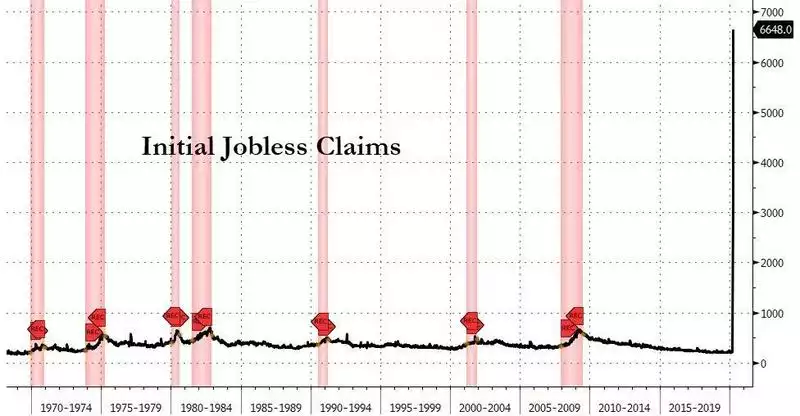
And that is just the beginning. From Bloomberg:
““The U.S. labour market is in free-fall,” said Gregory Daco, chief U.S. economist at Oxford Economics in New York.
“The prospect of more stringent lockdown measures and the fact that many states have not yet been able to process the full amount of jobless claim applications suggest the worst is still to come.””
How that plays out in the official unemployment rate against the backdrop of plunging economic growth is a dire picture. Yesterday we shared an excellent summary of why this shares bear market rally is likely a bull trap by Real Investment Advice’s Lance Roberts where he showed a chart against last week’s jobless claims. Roberts warns “the importance is that unemployment rates in the U.S. are about to spike to levels not seen since the Great Depression. Based on the number of claims being filed, we can estimate that unemployment will jump to 15-20% over the next quarter as economic growth slides 8%, or more. (I am probably overly optimistic.)” Again a picture paints a thousand words:
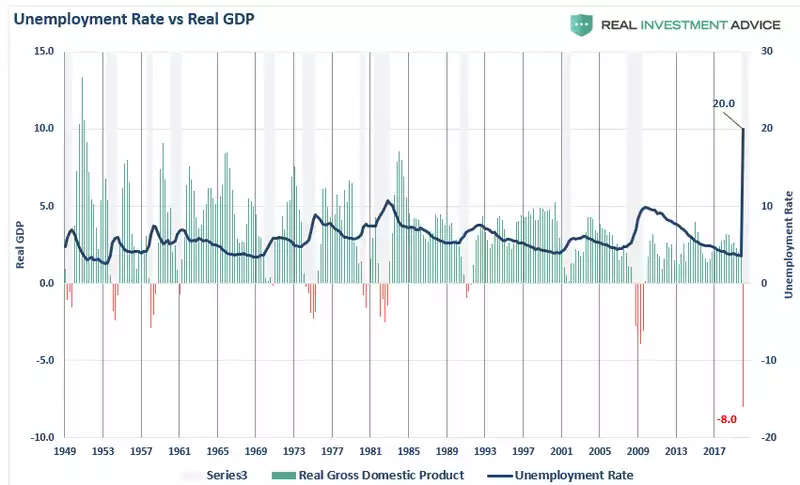
The US’s very own (and usually optimistic) Congressional Budget Office (CBO) is in agreement with a 7% contraction for the quarter or a 28% annualised contraction.
At home the CBA yesterday predicted our economy to contract by 7.5% and the unemployment rate to jump to 7.8% for the quarter. And the impact of all that stimulus against a falling economy? Our precious surplus is expected to be a $155b hole in FY21, no less than 8.1% of our GDP. To fund this Australian government bonds on issue will jump from $558b (27% of GDP) to $790b (40% of GDP)!
If you think that’s a lot of money printing, the US Fed has printed US$1.6 trillion in just 3 weeks to take their balance sheet to $6 trillion. As the chart below shows, that is about the same as all of QE3 over 15 months and equates to 7.5% of the entire US GDP. In 3 weeks. What will that be for the whole fiscal year??
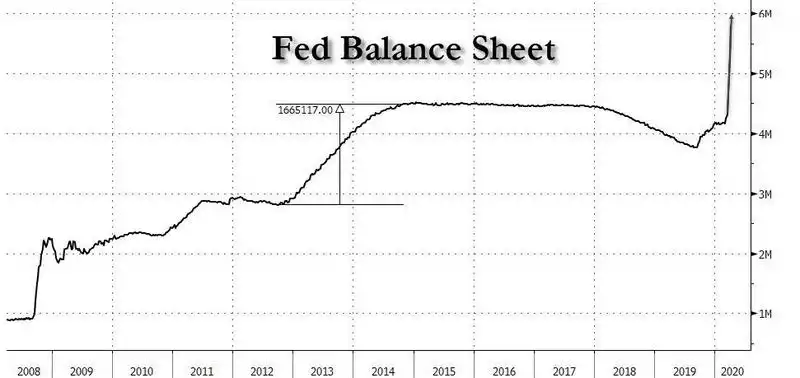
It should therefore be no surprise then that gold jumped on the news as facts show money being debased at a record amount, the data portending more to come as governments try to support all the newly unemployed, and the growing realisation that any rebound in shares is surely short lived as we discussed yesterday. After settling down, we are again now seeing a disconnect of the spot price and price for physical gold per below:
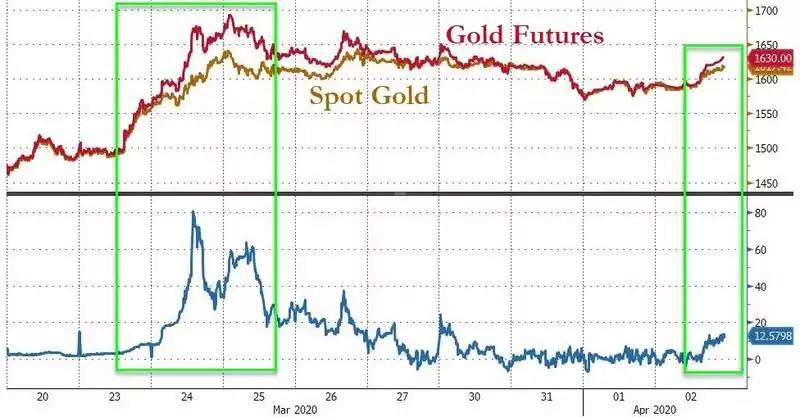
That said, the price is still not fully capturing the monetary demand as retail demand from China and India has plummeted. Whilst we see charts like that below showing huge spikes in demand for gold coins from the US Mint and Perth Mint reported yesterday the news out of China is very different.
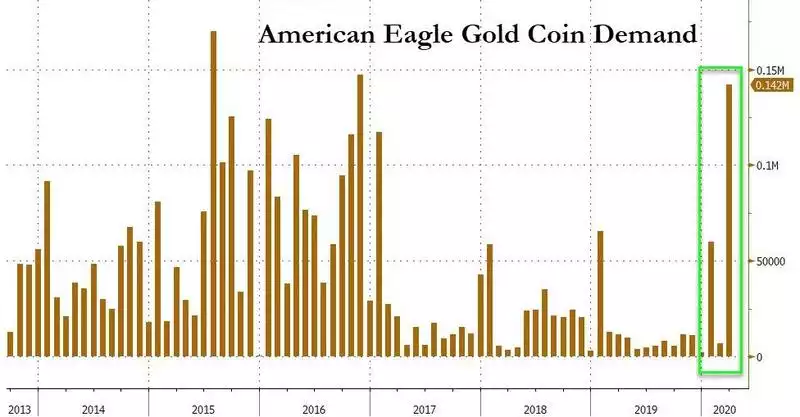
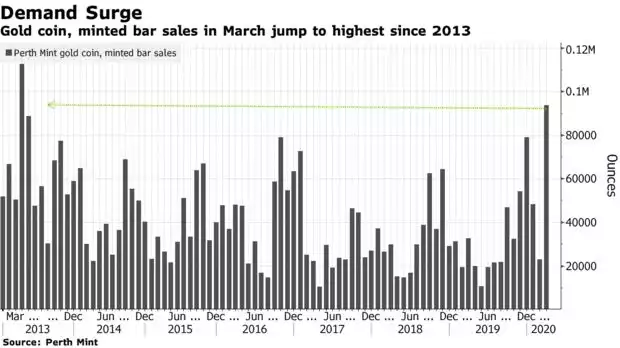
From Bloomberg:
“The coronavirus pandemic has frozen the Chinese gold market, torpedoing demand at a time when investors elsewhere in the world are clamouring for the safety of bullion.
China is the biggest buyer of gold bars, coins and jewellery, but the national shutdown to contain the virus has emptied malls, while the premium charged to buy the metal in China has evaporated. It leaves the industry staring down a long road to recovery, even as Beijing tries to jump-start broader consumption with a campaign to get shoppers out and about.”
The good news for investors is the price of gold is, for now, being somewhat contained due in part to the falling demand in China and India and also the broader liquidity draw down across all liquid assets. Clearly however the market strains for physical are still evident and history indicates strong times ahead amid the sort of central bank and government actions outlined above.